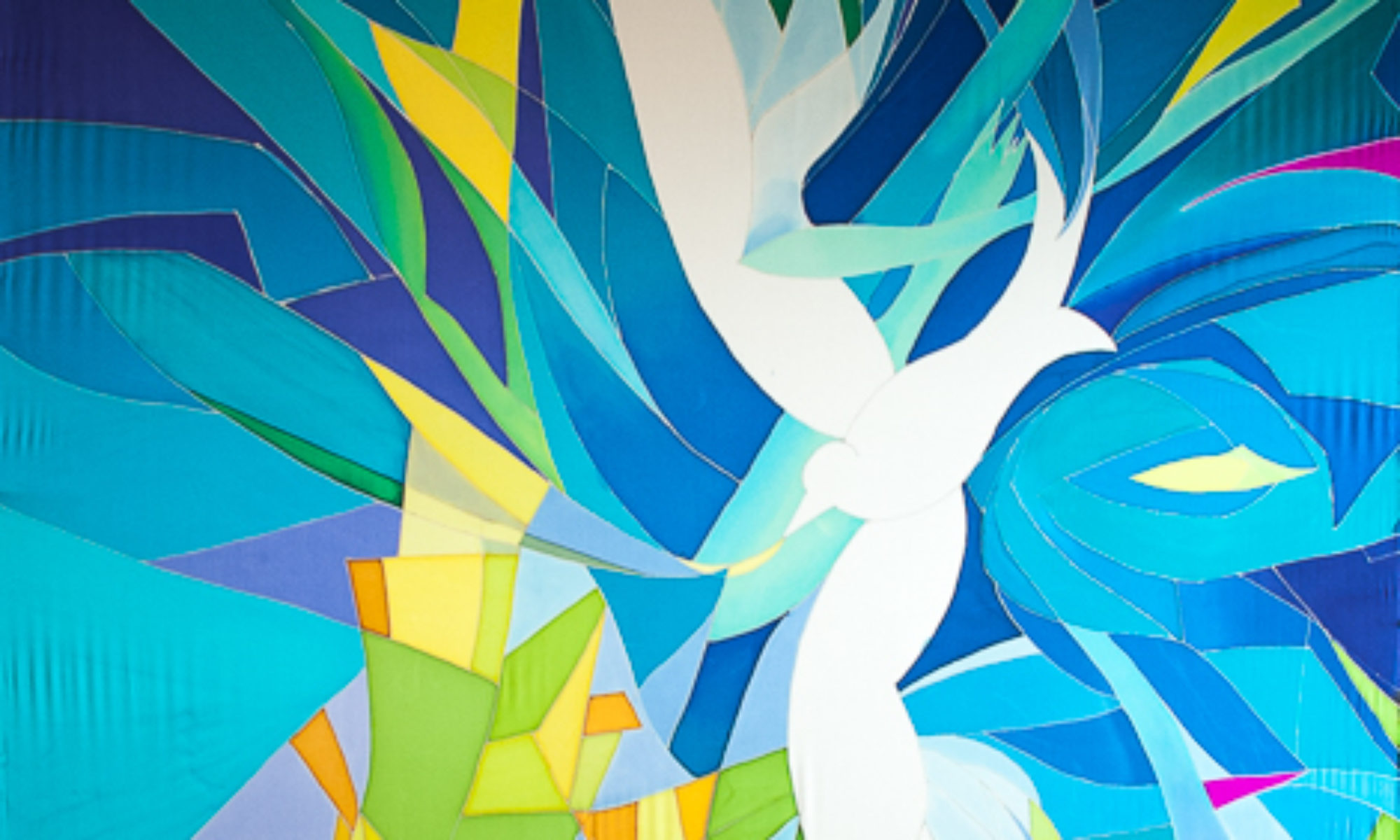Rich textures can be made using one dye, wax, salt and 4 layers.

This is a project I’m working on currently for a catholic church in Portland, OR. First I contacted a good friend who collaborates with me on lettering. She is a wonderful calligrapher. You can reach Laura Norton at lauranortonletterarts@gmail.com.
When she finishes the lettering I can start my watercolor sketch of the proposed design.

When the design is accepted, I make a copy of the sketch on newsprint the same size as the banner-to-be, in this case 13 feet by 30 inches. I make my lines with magic marker so the lines are dark. I place this pattern under the stretched silk, and can see the lines right through the silk. Next I apply a resist called “gutta” around the edges of the lettering, as seen through the silk. This establishes the lettering on the silk. When I apply the wax inside these gutta lines the gutta helps guide where the wax will go. Waxing the lettering means that the white silk is protected, as my first layer, and that the lettering will be white.

Below you can see that I have applied gold dye to the silk, and the wax has protected the lettering. However, I don’t want the lettering to be completely white. So I detach the silk from the frame just enough to get a handful of the silk. I am scrunching the wax to produce a crackle in the wax. The next layer of dye will enter these crackles and make a crackle design on the lettering. This is called “faux-batik”.

After scrunching the wax I apply some more wax with a sponge brush in sweeping streaks, but not too many as I want to add more streaks with each layer. Immediately I add a second layer of dye, and sprinkle salt on the wet dye. The salt melts and pushes the dye away, making a rain or snow like texture, similar to adding salt to watercolor. You can see the wet dye with the salt below. I also cover the cracked wax lettering with dye and a small bit seeps through.

Above you can see I also splattered wax randomly to add even more texture. And below you can see the result of the third and fourth layers of wax and dye, much more complicated. My goal is for a joyful motion to go with a sunny, warm rich color.

Now the painting and wax application are finished and need to be “fixed”. I roll both banners in layers of brown paper and newsprint and steam them. In the steaming process most of the wax melts off and is soaked into the newsprint, and the moist heat chemically bonds the dye into the silk fibers permanently.When the banners are unrolled the layers of dye will be revealed, the first layers being lightest and the 4th layer a deep gold.

Finally I will take these to the dry cleaner to remove any wax and dye residue, and the silk will regain its luxurious “hand” again, after being all stiff with foreign material.



